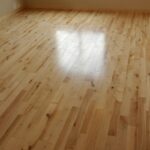What You Need
To effectively rag paint you will need:
- Paint, base and complementary color
- Water based glaze
- Brush or roller for base coat
- Clean cotton rags
- Mixing bucket
- Drop cloths
- Paint or masking tape
- Wide mouth, medium size bowl
Before You Begin
As with traditional painting projects , preparation is required. Remove all furniture from the area and tape off the edges of the walls to avoid getting paint on unintended areas. Use drop clothes or other coverings for carpets or other flooring.
Paint the intended wall with a base coat and allow to dry. For best results, allow 24-hours for drying. This base may be plain white, or a complementary color to your intended rag painting. If the wall is already the desired base color, wash the walls carefully to remove any dirt and dust. Due to this needed preparation, the room will not be available for regular use for at least 48 hours. Plan accordingly.
The Process
With the base coat applied and dried and the protective tape and drop cloths in place, you are ready to start rag painting. Learning how to rag paint begins with mixing the paint with the water based glaze. In a mixing bucket, add equal parts of latex paint and waterbased glaze. Stir the mixture well until the color in the bucket looks smooth and unified.
Dampen a clean, white cotton cloth with water and lay flat on a clean surface. Pick up the cloth by grasping the very middle. Squeeze the cloth into your hand to create a fan or rosette shape. Hold the rag firmly to not lose the shape. Dip the cloth barely into the paint mixture, coating only the exposed area on the outside of the hand grasp.
Select a starting point. Typically one begins in an upper corner area. Dab the paint covered area of the rag onto the beginning point. Before continuing, examine the blotch. If the paint begins to run, you are adding too much paint to the rag. Gently blot the area with a separate, clean rag to remove the excess paint. Dab the second selected area before redipping the rag. Decide if there is enough paint on the rag for a third dab before dipping the cloth for the second time. Experiment with dabbing the spot with paint, then blotting with a clean cloth on certain areas to slightly change the appearance of the area. Continue in the fashion until the wall is covered to the desired finish.
Finishing
Once the initial dabbing of the wall is complete, take a second look. Fill in any areas which may look too light or bare. Allow the paint to dry for 24-hours after the final paint is applied.
If a third color is desired, wait until the first layer of decorations are dry before applying. This will avoid blending of colors and unintentional smudging.
Dispose of all rags when the job is complete. Do not attempt to use the rags for a second project. The waterbased glaze will reactivate from a dried cloth when it is dampened prior to painting. This will cause color mixing on the rag.
Reference:
- Ron Hazelton’s House Calls: How to Use Rag-Roll Painting Technique – www.ronhazelton.com/archives/howto/rag-roll_painting_techniques.shtm
- Paint Bucket; EveryStockPhoto: everystockphoto.com/photo.php?imageId=266790





